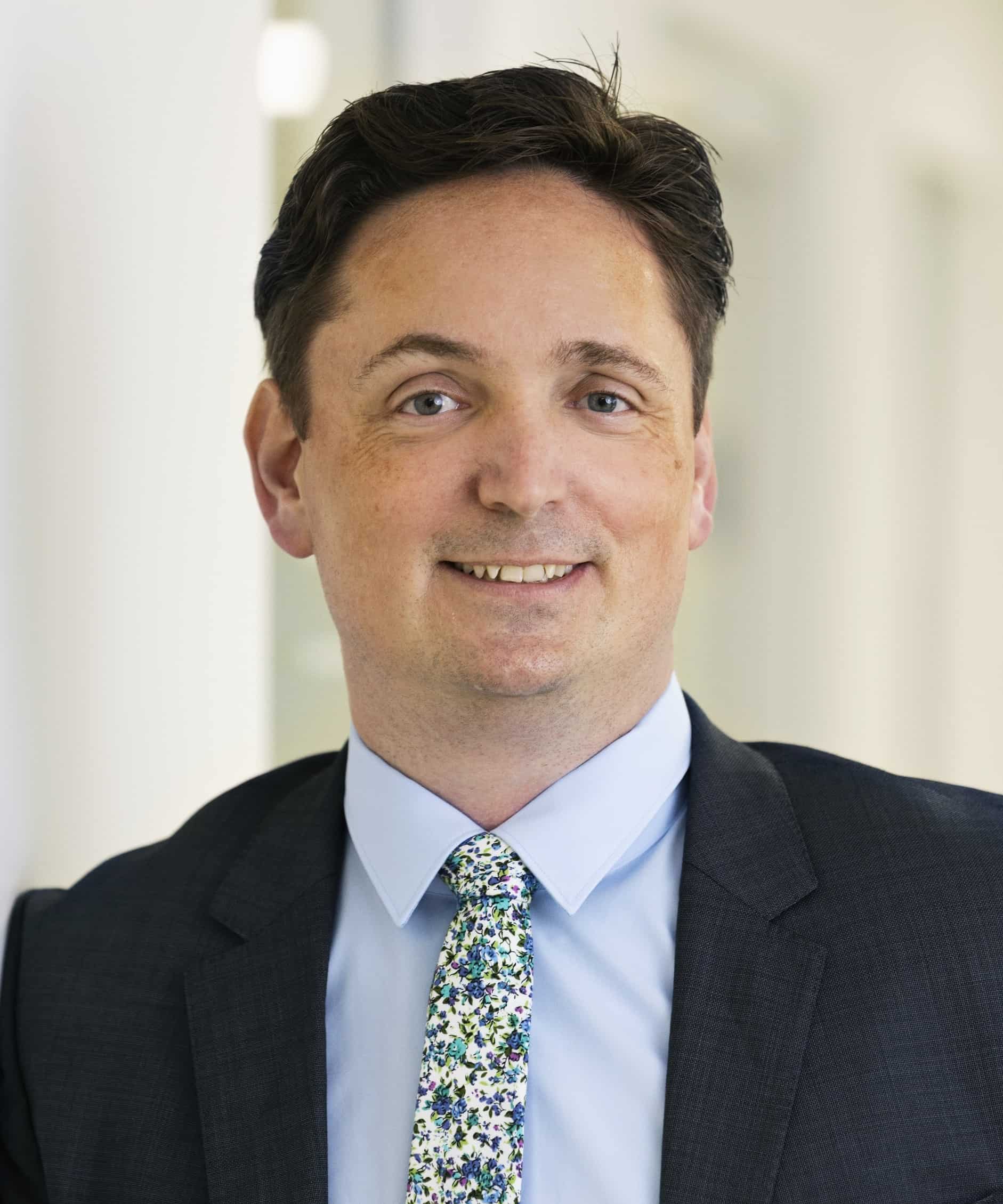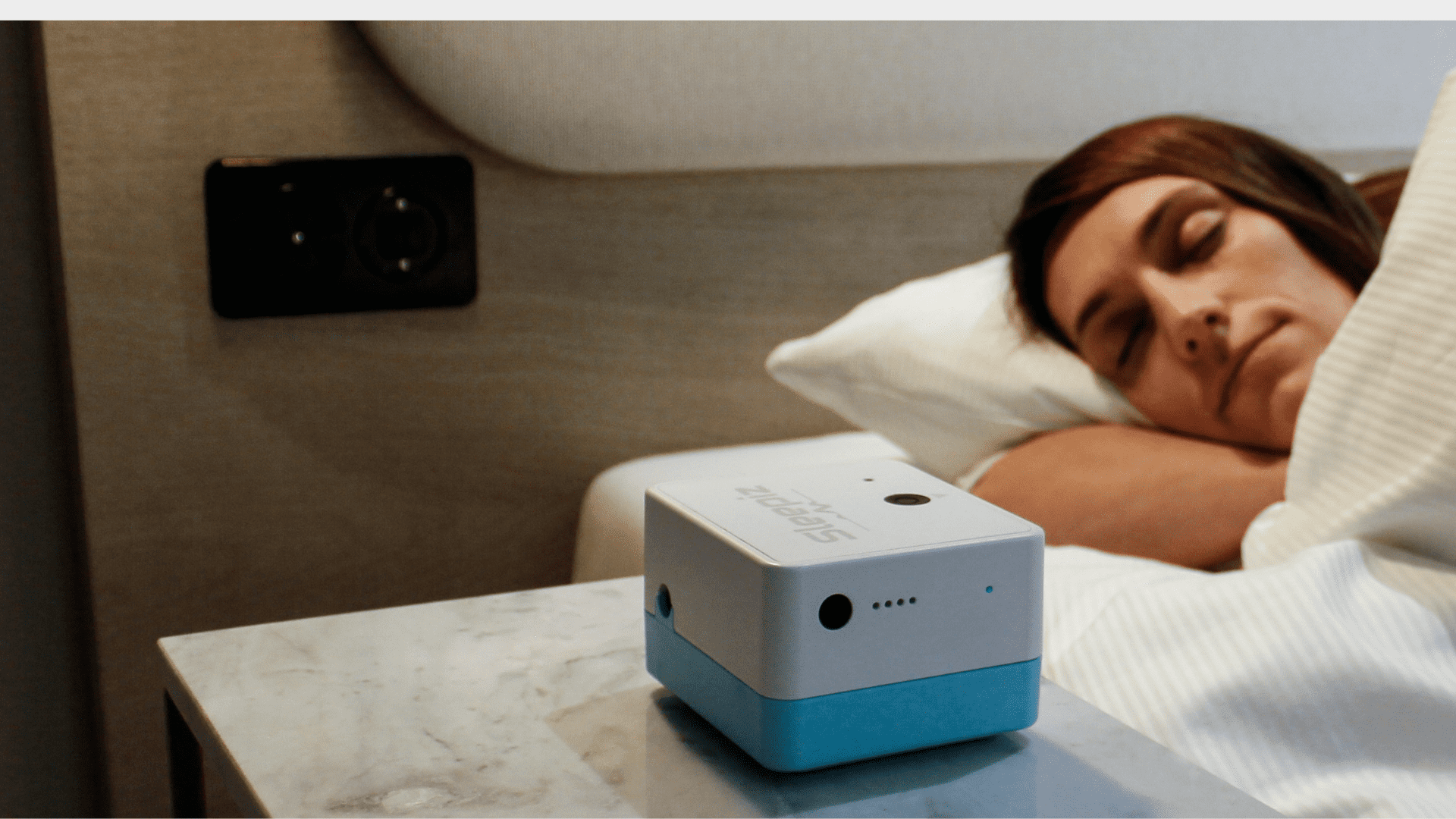Positron emission tomography (PET) imaging technologies use injectable radioactive tracing fluids to visualize tissue. They have been widely used across various branches of medicine, including oncology, neurology and cardiology since the 1980s. The gold standard of PET tracers in blood flow research for nearly 30 years has been 15O-water. However, it has yet to make it into hospitals on a large scale. MedTrace is aiming to commercialize the use of 15O-water for easy widespread adoption. COO Rune Wiik Kristensen tells us how.

COO and President of US Subsidiary, MedTrace
Rune is co-founder, Chief Operations Officer and President of the US subsidiary of MedTrace. He previously worked in the Department of Nuclear Medicine at both Aalborg and Aarhus University Hospitals before transitioning to commercial roles, first as a product specialist and then as a territory manager for Denmark and Norway with a focus on nuclear medicine and PET centers. He has a master of science in bio- and nanotechnology from the University of Aalborg and completed the European Association of Nuclear Medicine´s postgraduate education in radiochemistry and radiopharmacy at ETH Zürich.
What made you decide to found MedTrace?
While I was working in the radiochemistry department at Aarhus University Hospital, in their PET imaging center, we did a lot of neuro-PET and onco-PET imaging, but very little cardio-PET imaging. So I asked the question, why were we not doing more cardio-PET scans? Why were we not using a 15O-water tracer? Because there were already so many articles about its efficacy. The hospital had some proprietary equipment for it, but it was clear that it was not built for wide use and would not be commercially scalable. That made me realize that there was this unmet clinical need in the cardiac space that could be solved by a 15O tracer solution. I later teamed up with Martin Stenfeldt who brought the business know-how and Peter Larsen who had the skills to build the equipment we needed and together we founded MedTrace.
Your product uses 15O-water as a PET tracer which has been considered the gold standard in blood flow research since the 1990s. Why hasn’t it been commercialized until now?
15O is chemically very simple to make, but very difficult to use in a hospital setting because of its short half-life of just over 2 minutes. It cannot be produced on a large scale through conventional means of manufacturing; it cannot be made in batches and then left on the shelf. You have to make a production run for every single patient dose, and if that production isn’t bed-side to the PET scanner, someone has to transport it there, taking time and effort. That’s why, until now, its use has been limited to research purposes. When there is no widespread use of a tracer, there is also very little incentive to develop the software algorithms needed to process the imaging data in a new way. These were the challenges standing in the way of its widespread adoption and MedTrace is successfully tackling them.
Our solution produces 15O-water on the spot, doses and injects the patient as he is lying directly in the PET scanner. With such a workflow, the advantages of 15O’s short half-life can be exploited. Since cardiac clinical investigations usually involve two scans, the patient can stay on the scanner bed between scans as 10 minutes after the initial 15O dose there’s as little as 1,5% remaining activity from the first injection. My co-founders in MedTrace are top scientists in the field, and together they have also developed radical new ways of quantifying the scan results and presenting them as clinical meaningful data for physicians to interpret through our proprietary imaging analysis software, aQuant. MedTrace has been able to attract incredible talent to the company, and we keep a key focus on collaboration and execution. Our success so far has been a real team effort.
However, to produce 15O-water, your solution needs a particle accelerator called a cyclotron. Does that limit the adoption of 15O as a PET tracer as well?
It’s not really an obstacle. There are about 1000 cyclotrons currently being used in radiopharmaceutical manufacturing around the world, and the majority of these are placed inside larger hospitals and academic centers, which are more than enough for our commercial purposes. And the way the cyclotrons are being used today, they have spare capacity, but we are expecting to see a significant uptake in cyclotron installations as the field grows, not only due to 15O-water but also because of the many other radiopharmaceuticals being developed.
Regulatory approval is usually the biggest hurdle pharmaceutical and medtech companies face, but MedTrace has been fortunate in this respect. Thanks to a magistral exemption, it is already being used in two hospitals in Denmark. How does that work?
European drug legislation allows EU member states to give special permission to use drugs such as radiopharmaceuticals on compassionate use grounds or when the clinical benefit for patients or the public outweigh the risks of the pharmaceutical not having been approved for the market yet. The process for obtaining such an approval varies from member state to member state, but specifically for Denmark, MedTrace together with its hospital partners composed a dossier for application to the Danish Medicines Agency, and following review they gave the thumbs up for implementation in clinical routine. It’s not a trivial process, but it is far shorter than the conventional full approval route. For Aarhus University Hospital and the Danish National Hospital in Copenhagen, the clinical need was so great that it was worth getting the permits. MedTrace is now seeing similar interest from hospitals in Germany and Sweden.

Invest in Startups
As one of Europe’s most active venture capital investors, we grant qualified private investors access to top-tier European startups. With investments starting at EUR/CHF 10’000, you can build your own tailored portfolio over time and diversify across stages and sectors.
The two hospitals in Denmark have already been using your solution for over two years. What has the feedback been?
The support from the nuclear medicine community has been phenomenal. Two years after our first machine was installed at Aarhus University Hospital in early 2021, it has completed 3000 patient cardiac examinations with 6000 doses administered. And all this without any serious adverse events. Regulators as well recognize that 15O is a low-risk product because it’s just water and it has been used for so many years in research. Everybody wants this to succeed. I think you can really see that in the fact that two hospitals in Denmark and other hospitals in Europe really don’t want to wait until the final regulatory approval before they implement it in clinical practice. The American community wishes it could do the same, but the system there is different and they don’t have the option of applying for permits as some hospitals in Europe do. So they will have to wait until the end of the clinical trials MedTrace has already started and the US Food and Drug Administration (FDA) approval.
It is worth mentioning that 15O-water is not only relevant to cardiology, but can also be applied to other important clinical fields such as oncology and neurology. An investigator sponsored oncology study initiated at Osaka University Hospital in Japan is using our solution to measure tumor blood flow in patients with lung cancers as they undergo chemotherapy. We’ve also entered a know-how license agreement with the Mayo Clinic in the US centered around a pilot study measuring lung cancer tumor blood flow with 15O-water and another tracer.
In the US as well, MedTrace has managed to significantly reduce the length of the typical regulatory process. The FDA allowed you to start your trials directly at phase 3. What did it take to get such an approval?
What we did was we looked at peer-reviewed articles published to date about the effectiveness of 15O for cardiac use and composed a medical literature review that included over 400 of these articles. We then presented our findings to the FDA and asked whether we could start in Phase 3 with a pivotal confirmatory trial. Fortunately the FDA agreed, and we are now rolling out hardware, activating trials sites and enrolling patients in accordance with the FDA’s guidance. When the study is concluded, the results and findings will be presented to the FDA for evaluation and we will see if one study is enough to go directly for New Drug Approval and subsequent access to the US market. Since the trial is undertaken in both Europe and the US, we intend to take the same results to the European Medicines Agency to obtain market authorization in Europe as well.
You’ve recently been appointed President of the US MedTrace subsidiary and relocated to the US. How does this benefit the company’s progress in the US market?
We needed top management to focus on the US because it will be the biggest market by far. It’s also where we’re mainly driving our clinical trial activities. By having me here, we can execute much faster and quicker than normally. It also ties into my practical experience with the company. I´ve been through the entire process of product development, regulatory strategy, hospital implementation and system qualification. Me being in the same time zone as the US employees that are setting up trial sites makes the work easier.
What are the challenges ahead for MedTrace?
We have a very solid plan for execution for the next few years, until market approval. Our Quality Management System is now ISO 13485 certified, and we have submitted our first product application for CE marking on medical device components related to our system for manufacturing 15O-water. We’re on track to securing that CE mark by the first quarter next year, which will give us different opportunities to explore the European space from a commercial point of view. Our US phase 3 trial enrollment is also on track. We’re expanding with new sites all the time and we anticipate that we will close out patient enrollment by summer next year. The big question mark will be, is the clinical evidence from the study sufficient for drug approval in the US and the EU? However, that’s the question all pharma and device companies face and we feel fairly confident that we will be successful.
Written by
WITH US, YOU CANCO-INVEST IN DEEP TECH STARTUPS

Verve's investor network
With annual investments of EUR 60-70 mio, we belong to the top 10% most active startup investors in Europe. We therefore get you into competitive financing rounds alongside other world-class venture capital funds.
We empower you to build your individual portfolio.
More News
05.10.2022
“French health startups are in a very good position”
Caroline Sai leads Angels Santé, Europe’s biggest health-focused business angel club. In this interview, she tells us which topics in health are hot right now, and which are not.
13.09.2022
“We want to democratize the sleep industry”
Over 1 billion people globally suffer from sleep apnea and chronic respiratory diseases. To get diagnosed in a sleep clinic, patients face waiting times of more than 8 months and high costs. The outdated technology also makes long-term monitoring difficult. In this interview, Sleepiz CEO Soumya Dash tells us the story of how he decided to apply his knowledge in wireless signal analysis to the field of sleep, enabling a faster diagnosis of sleep and respiratory disorders and wider access to sleep data for all.
09.12.2021
“We help our clients reduce injury rates by 30-60%”
Machines in industry break down, but so do people. Avoiding costly work-related injuries is in the best interest of employers, not just because of their reputation, says Soter Analytics' co-founder Matthew Hart in this interview.
Startups,Innovation andVenture Capital
Sign up to receive our weekly newsletter and learn about investing in technologies that are changing the world.




